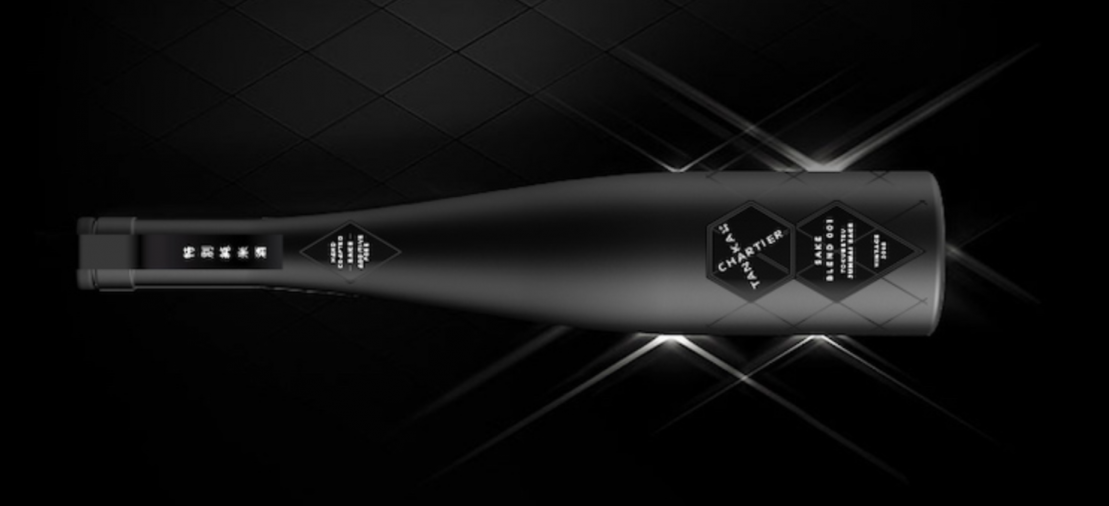SAKES WITH A FRENCH ACCENT, BY JANCIS ROBINSON

JancisRobinson.com May 18th, 2020
Two of Champagne's most respected chefs de cave and a French Canadian gastro-moleculist have turned their hands and palates to sake.
François Chartier
I first came across Chartier in 2012 thanks to our Spanish specialist Ferran Centelles (elBulli sommelier also). When Chartier won his Best Sommelier award he was still living in Montréal but has since moved to Barcelona. His speciality is the science of taste and flavour – his emails are signed off 'Créateur d'Harmonies' – and he is about to launch the first edition, 001, of his Tanaka 1789 X Chartier sake, vintage 2018. I cannot comment on the packaging of this one as I tasted an early sample sent straight from Japan that had not yet been properly liveried but the second picture below suggests it shares the matt black look of IWA.
Chartier had the idea of producing a sake in 2017 and approached the project as you would expect of someone with his background. He explains: 'I asked the cellar manager (the toji), if he could adjust some steps in the development of the sakes that I would like to use as a basis in order to assemble the best blends possible. He accepted. So I more or less adjusted nine production stages including rice-polishing.' If the rice-polishing ratio of a sake is, for example, 65%, it means that 35% of the rice has been polished away. The Japanese have traditionally revered sakes with as low a rice-polishing ratio as possible.
'I've asked myself a question for many years: would you peel a grape before making wine? So why polish the rice so much? As my goal is to produce sakes that are close to the style of wine, without losing the soul of sake, after all my studying and tasting of sake, I think the best polishing ratio (depending on the variety of rice), to get more aromas, more umami and more acidity (like wine), is between 70% and 60%.' This mirrors Richard Geoffroy's views on polishing; it seems as though you need to be born in Japan to believe the more rice is polished, the better. Chartier's first sake is made up of Miyama Nishiki and Yamada Nishiki rice, which are polished to 70%, and 'Kura No Hana (an amazing local variety of Miyagi)' polished to 60%.
It's also notable that for Chartier acidity is a positive attribute in sake rather than the negative one as described by the Heavensake team and referred to by Geoffroy. Here's how he describes his sake: 'A first in the world of sake, this inaugural blend awakens the taste buds with a unique natural fresh acidity reminiscent of the elegance and verticality of the best white wines of the world.' Unusually, he recommends ageing his sake. 'Acidity, texture, umami: all will slowly continue to evolve into nutty and sotolon-subtle aromas.'
I really enjoyed this Tanaka 1789 X Chartier Blend 001 Junmai sake 2018 ($85 RRP). It had quite a complex mix of citrus and herbal notes on the nose and seemed drier, with more grip, than the Heavensake sakes I tasted at the same time. It tastes pretty much bone dry in fact. There was a bit of perceptible alcohol (it's 16.7%, apparently) and black pepper on the finish. If one were to nominate a similar wine, it would be a young white burgundy. Chartier, who recommends drinking it in the same way as you would a white burgundy, suggests that it smells of aniseed and fresh basil. It's certainly very positively flavoureed, and would make an impression even in a darkened nightclub.
Given his background in food and wine matching (see, incidentally, our guide to hundreds of suggested pairings by our new hospo members that we are publishing this month), I couldn't resist asking Chartier what he recommends eating with this sake. 'Everything that matches perfectly with Chardonnay', he said, adding, 'We'll touch the sky here! But also, think about cheeses, because the umami of cheese blends so well with the umami content of Junmai sake, and the saltiness of cheese magnifies the umami also. Then cured ham such as Spain's jamón ibérico is a match made in heaven. Wagyu beef (Kobe-style aged beef) is also rich in umami. Rich foods like braised pork and pan-seared scallops are just perfect too because of their umami content.'
So now you know.
Jancis Robinson, (May 18th 2020)
Read the full article, with the Richard Geoffroy and Regis Camus parts also: www.jancisrobinson.com/articles/sakes-french-accent